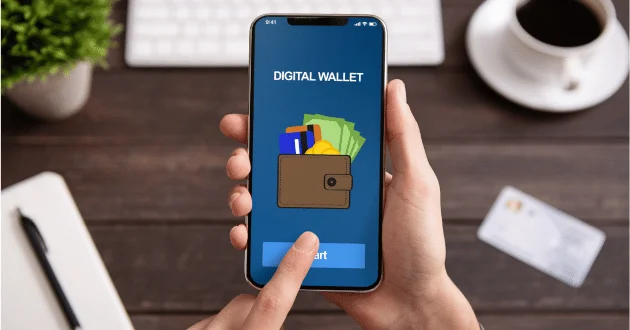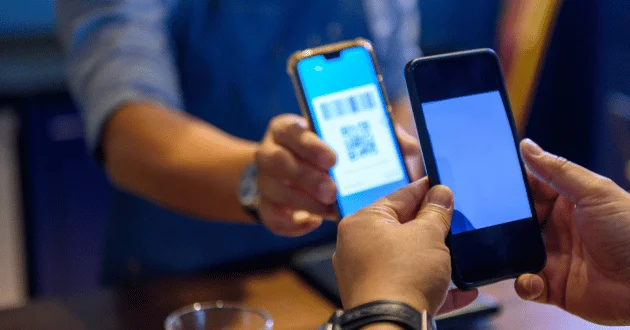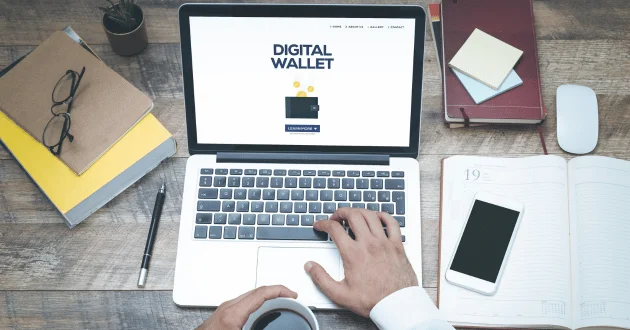
In today’s digital age, convenience and security are paramount when it comes to financial transactions. One technology that has revolutionized the way we handle our finances is the digital wallet. A digital wallet, also known as an e-wallet or mobile wallet, is a virtual platform that allows users to securely store, manage, and transact with their money and personal information. In this comprehensive guide, we will delve into the world of digital wallets, exploring their features, benefits, and how they are transforming the way we handle our finances.
What is a Digital Wallet?
A digital wallet is a software-based platform that allows users to securely store their payment card information, such as credit or debit card details, as well as other personal information like loyalty cards, coupons, and identification documents. It acts as a virtual wallet where users can conveniently access and manage their financial information from their mobile devices or computers.
Digital wallets aim to simplify the transaction process by eliminating the need for physical cards or cash. They provide a secure and convenient way to make payments, transfer funds, and access various services that require financial information.
Read more: Personal Finance Software
How Does a Digital Wallet Work?
Digital wallets utilize various technologies like Near Field Communication (NFC), QR codes, or Magnetic Secure Transmission (MST) to facilitate transactions. When making a payment using a digital wallet, the user’s payment information is securely transmitted to the merchant’s point-of-sale (POS) system through these communication methods.
The digital wallet app acts as an intermediary between the user’s payment information and the merchant’s system. It encrypts the payment data and sends it to the merchant for processing. Some digital wallets also generate unique transaction codes for each payment, adding an extra layer of security by ensuring that the actual card details are not shared with the merchant.
Digital wallets also offer functionalities beyond traditional payment methods. They can store loyalty cards, coupons, and identification documents digitally. Users can access these stored items easily and conveniently whenever needed.

Types of Digital Wallets
There are several types of digital wallets available today, each catering to different user preferences and needs. Let’s explore the most common types:
Mobile Wallets
Mobile wallets are perhaps the most popular type of digital wallets. These wallets are accessed through mobile applications installed on smartphones or other mobile devices. They leverage technology like NFC to enable contactless payments by simply tapping the device near a compatible payment terminal.
Examples of popular mobile wallets include Apple Pay, Google Pay, and Samsung Pay. These wallets often come pre-installed on smartphones or can be downloaded from app stores.
Online Wallets
Online wallets, also known as web wallets or cloud-based wallets, are accessed through web browsers on desktop computers or mobile devices. Users can access their accounts by logging into the wallet provider’s website and managing their financial information from there.
Popular online wallet providers include PayPal, Skrill, and Paytm. These wallets are especially useful for online shopping and e-commerce transactions.
Hardware Wallets
Hardware wallets are physical devices that store users’ payment information offline, offering an extra layer of security for those who are concerned about online vulnerabilities. These wallets are typically in the form of USB devices or smart cards and require a physical connection to a device for transactions.
Popular hardware wallet brands include Ledger and Trezor. These wallets are ideal for users who prioritize maximum security for their digital assets.
Key Features of Digital Wallets
Digital wallets come with a range of features that make them attractive to users. Let’s explore some of the key features that make digital wallets stand out:
Security Measures
One of the primary concerns when it comes to financial transactions is security. Digital wallets address this concern by implementing various security measures like encryption, tokenization, and biometric authentication (fingerprint or facial recognition). These features ensure that users’ payment information remains secure and protected from unauthorized access.
Encryption converts sensitive data into unreadable code, making it difficult for hackers to decipher the information even if they manage to intercept it. Tokenization replaces sensitive card details with unique tokens that have no intrinsic value outside the specific transaction context. Biometric authentication adds an extra layer of security by allowing only authorized individuals to access the digital wallet using their unique physical traits.
Ease of Use
Digital wallets offer a user-friendly interface that simplifies the payment process. With just a few taps or clicks, users can complete transactions quickly and effortlessly. Additionally, many digital wallets allow users to store multiple payment methods in one place, eliminating the need to carry multiple physical cards.
The streamlined checkout process reduces friction during transactions, enhancing the overall user experience. Users can easily select their preferred payment method from within the wallet app, without having to manually enter payment details for each transaction.
Integration with Payment Methods
Digital wallets seamlessly integrate with various payment methods like credit cards, debit cards, bank accounts, and even cryptocurrencies. This versatility allows users to choose their preferred payment method without having to carry physical cards or remember complex account details.
Integration with multiple payment methods provides users with flexibility and convenience when making transactions. Whether it’s paying with a credit card or sending money through a peer-to-peer transfer service, digital wallets enable users to access various payment options within a single platform.
Loyalty Programs and Rewards
Many digital wallet providers offer loyalty programs and rewards schemes that incentivize users to make payments using their platforms. These programs often provide cashback offers, discounts, or reward points that can be redeemed for future purchases or services.
By linking loyalty cards to digital wallets, users can conveniently earn rewards and redeem them without carrying physical cards or remembering account numbers. This integration simplifies the loyalty program experience for users while enabling merchants to enhance customer engagement and encourage repeat purchases.
P2P Payments and Fund Transfers
Digital wallets also enable peer-to-peer (P2P) payments and fund transfers between individuals. Users can easily send money to friends, family members, or merchants without the need for physical cash or bank transfers. This feature is particularly useful for splitting bills, repaying friends, or making quick payments to individuals in various situations.
The ability to send and receive funds within the digital wallet ecosystem eliminates the hassle of dealing with cash and simplifies money transfers between parties. Additionally, digital wallets often offer real-time transaction notifications, allowing users to track the status of their P2P payments and fund transfers seamlessly.

Advantages of Using a Digital Wallet
Using a digital wallet offers several advantages over traditional payment methods:
Convenience and Accessibility
Digital wallets provide users with the convenience of making payments anytime, anywhere, as long as they have an internet connection. Users no longer need to carry physical cards or cash, which reduces the risk of loss or theft.
The accessibility of digital wallets allows users to manage their finances on-the-go, whether it’s making a purchase at a store, paying for a ride-share service, or transferring money to a friend. With just a few taps on their mobile devices, users can complete transactions swiftly and efficiently.
Enhanced Security
With advanced security features like encryption, tokenization, and biometric authentication, digital wallets offer increased security compared to traditional payment methods. Additionally, the use of unique transaction codes for each payment adds an extra layer of protection by ensuring that sensitive card details are not exposed during transactions.
The enhanced security measures provided by digital wallets give users peace of mind when making payments or managing their financial information. By leveraging cutting-edge technologies, digital wallets strive to protect users from potential fraud or unauthorized access to their payment data.
Streamlined Checkout Process
Digital wallets streamline the checkout process by eliminating the need to manually enter payment information for each transaction. Users can simply select their preferred payment method from within the wallet app, reducing friction during the payment process.
The simplified checkout process not only saves time but also enhances the overall shopping experience for users. Whether it’s making an in-store purchase or completing an online transaction, digital wallets enable swift and hassle-free payments.
Budgeting and Expense Tracking
Many digital wallet apps offer features that help users track their expenses and manage their budgets effectively. By providing insights into spending patterns and offering transaction history summaries, users can gain a better understanding of their financial habits.
The budgeting and expense tracking features within digital wallets empower users to make informed decisions about their spending. With access to detailed transaction records and spending analyses, users can take control of their finances and work towards achieving their financial goals.
Integration with Other Services
Digital wallets often integrate with other services like ride-sharing apps or food delivery platforms, further enhancing convenience for users. This integration allows seamless payments within these platforms without having to switch between multiple apps.
The integration of digital wallets with various services creates a unified ecosystem that simplifies the payment process across different aspects of daily life. Whether it’s ordering a meal, booking a ride, or purchasing event tickets, users can seamlessly make payments without leaving their preferred digital wallet app.
Popular Digital Wallet Providers
Several digital wallet providers dominate the market today due to their popularity and widespread adoption. Let’s take a closer look at three prominent players in this space:
Apple Pay
Apple Pay is Apple’s proprietary digital wallet service available on iOS devices such as iPhones, iPads, and Apple Watches. It leverages NFC technology for contactless payments and integrates with Apple’s ecosystem seamlessly. To use Apple Pay, users need to add their credit or debit cards to the Wallet app and authenticate payments using Touch ID or Face ID.
Apple Pay’s seamless integration with Apple’s hardware and software ecosystem makes it a convenient choice for users who are already invested in the Apple ecosystem. The widespread acceptance of Apple Pay at various retailers and businesses further enhances its appeal as a go-to digital wallet solution for Apple device users.
Google Pay
Google Pay is Google’s digital wallet solution available on Android devices. It combines features from Google Wallet (previously known as Android Pay) and Google’s peer-to-peer payment system called Google Tez. Google Pay supports both NFC-based contactless payments and online transactions through supported websites and apps.
Google Pay’s integration with Google’s suite of services and its compatibility with a wide range of Android devices make it a popular choice among Android users. The ability to store loyalty cards and access personalized offers within the app adds value to the overall user experience.
PayPal
PayPal is one of the earliest pioneers in the digital payments industry. It offers online wallets that allow users to send money, make payments online, and receive funds securely. PayPal supports various funding sources like bank accounts, credit cards, and existing PayPal balances.
PayPal’s extensive network of merchants and its widespread acceptance as a payment method for online transactions make it a trusted choice for users engaging in e-commerce activities. The ability to send money internationally and access buyer protection further solidifies PayPal’s position as a leading digital wallet provider.

How to Set Up and Use a Digital Wallet
Setting up and using a digital wallet is relatively straightforward. Here are the general steps involved:
Step 1: Download and Install the App
Start by downloading the digital wallet app from your device’s app store. Ensure that you choose a reputable provider that suits your needs.
When selecting a digital wallet app, consider factors such as supported payment methods, security features, and compatibility with your device. It’s essential to download the app from official app stores to minimize the risk of installing counterfeit or malicious applications.
Step 2: Create an Account
Launch the app and follow the on-screen instructions to create an account. Typically, you will need to provide basic personal information like your name, email address, phone number, and sometimes additional verification documents.
During the account creation process, pay attention to any security settings or options that the app offers. Setting up strong authentication methods and opting in for additional security features can help safeguard your digital wallet account against unauthorized access.
Step 3: Add Payment Methods
Once your account is set up, you can add your preferred payment methods to your digital wallet account. This may include linking your credit card(s), debit card(s), bank account(s), or even cryptocurrencies depending on the wallet provider’s offerings.
When adding payment methods, ensure that you provide accurate information and verify the linked cards or accounts as per the app’s guidelines. Some digital wallets may require additional verification steps for added security before allowing full access to all features.
Step 4: Make a Payment
To make a payment using your digital wallet, open the app and select the appropriate payment method if you have multiple options available. Follow any additional prompts required for authentication (e.g., fingerprint or facial recognition) and complete the transaction by tapping or scanning your device at a compatible payment terminal.
As you make your first payment using the digital wallet, take note of any specific features or functionalities offered during the transaction process. Familiarizing yourself with how payments are initiated and authorized within the app can contribute to a seamless user experience in future transactions.
Security Concerns and Best Practices
While digital wallets offer enhanced security compared to traditional payment methods, it’s essential to remain vigilant and follow best practices to protect your financial information. Here are some key security concerns to be aware of:
Phishing Attacks
Beware of phishing attacks where malicious actors attempt to trick you into divulging sensitive information such as login credentials or personal details by posing as legitimate wallet providers via email or text messages. Always verify the authenticity of any communication before providing any information.
When receiving communication from your digital wallet provider, ensure that it originates from official channels or verified contacts associated with the provider. Avoid clicking on suspicious links or providing sensitive information through unsolicited messages.
Device Security
Ensure that your device is protected with up-to-date security measures like passcodes or biometric authentication (fingerprint or facial recognition). Regularly update your device’s operating system and enable automatic updates whenever possible.
Maintaining strong device security is crucial in safeguarding your digital wallet information from potential threats. Keep your device’s security features enabled at all times and exercise caution when granting permissions to apps that request access to sensitive data.
Two-Factor Authentication (2FA)
Enable two-factor authentication whenever possible to add an extra layer of security to your digital wallet account. This typically involves receiving a verification code via SMS or using an authenticator app before accessing your account.
Two-factor authentication provides an additional barrier against unauthorized access by requiring a secondary form of validation beyond your login credentials. By enabling this feature, you can significantly enhance the security of your digital wallet account.
Secure Network Connections
Avoid using public Wi-Fi networks when making sensitive transactions with your digital wallet as they may not be secure. Stick to trusted networks or consider using a virtual private network (VPN) for added security.
When accessing your digital wallet app from public places or unfamiliar networks, prioritize using cellular data or secure Wi-Fi connections whenever possible. Avoid conducting sensitive transactions over unsecured networks to minimize the risk of unauthorized interception of data.
Regularly Monitor Transactions
Frequently review your transaction history within your digital wallet app or check your bank statements regularly to spot any unauthorized activity promptly.
Staying vigilant about monitoring your transaction history allows you to quickly identify any discrepancies or unauthorized transactions that may indicate potential security breaches. Promptly reporting any suspicious activity can help mitigate potential risks associated with unauthorized access to your account.
By remaining mindful of these security concerns and implementing best practices for safeguarding your digital wallet account, you can mitigate potential risks while enjoying the convenience and benefits offered by this innovative payment solution.
Conclusion
Digital wallets have transformed how we manage our finances by offering convenience, security, and flexibility in our everyday transactions. With their growing popularity and continuous advancements in technology, we can expect digital wallets to become an integral part of our financial lives moving forward.
By understanding what digital wallets are, how they work, their key features, advantages, popular providers, and best practices for security, you can confidently embrace this innovative payment solution while keeping your financial information safe.


